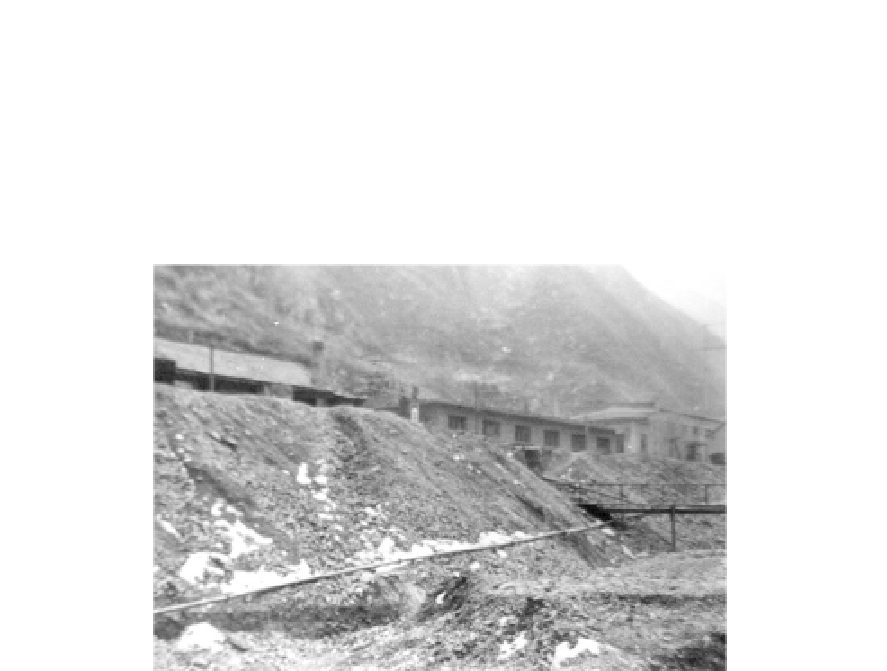Environmental Engineering Reference
In-Depth Information
stream corridors. Many rivers ecosystems remain in a degraded condition as a result of mining activities.
Such mining activity frequently resulted in total destruction of the stream corridor. In some cases today,
mining operations still disturb most or all of entire watersheds. Figure 10.29 shows a gold mine in the
Henan Province in central China. Mercury was used to separate gold from the ore, therefore, mercury
was also lost into streams. Present-day miners using suction dredges often find considerable quantities
of mercury still resident in streambeds. Current heap-leaching methods use cyanide to extract gold from
low-quality ores. This poses a special risk if operations are not carefully managed.
Fig. 10.29
A gold mine in the Henan in central China causes pollution of the Yihe River
Pollution
—Point source pollution from industry and diffuse pollution from agriculture (pesticides and
nutrients) have the potential to disturb natural chemical cycles in streams, and, thus, to degrade water
quality and impact the ecosystem. Figure 10.30 (a) shows waste water from a factory discharged into the
Jialing River, a large tributary of the Yangtze River in the Sichuan Province, and the seriously polluted
river water. Riparian vegetation and animals near the outlet have been killed. The frog shown Fig 10.30 (b)
has been killed due to the pollution. Heavy sewage discharge also causes stresses to the bio-communities.
Figure 10.31 (a) show the pollution of a stream flowing through the Dalian City, which is caused by
uncontrolled sewage discharge. Fish and many other animals in the stream have been killed by the
pollution. Figure 10.31 (b) shows eutrophication of the Lijiang River at Guilin, a famous tourism attraction
for its beautiful landscape and streams. Sewage discharge from the city causes pollution of the river
water and blooming of phytoplankton and macrophytes.
Toxic runoff or precipitates can kill streamside vegetation or can cause a shift to species more tolerant
of polluted conditions. This affects habitat required by many species for cover, food, and reproduction.
Aquatic habitat suffers from several factors. Acid mine drainage can coat stream bottoms with iron
precipitates, thereby affecting the habitat for bottom-dwelling and feeding organisms. Precipitates coating
the stream bottom can eliminate places for egg survival. Fish that do hatch may face hostile stream
conditions due to poor water quality.
Chemical disturbances from agriculture are usually widespread, nonpoint sources. Municipal and
industrial waste contaminants are typically point sources and often chronic in duration. Secondary effects,
such as agricultural chemicals attached to sediments, frequently occur as a result of physical activities
(irrigation or heavy application of herbicides). In these cases, it is better to control the physical activity at
its source than to treat the symptoms within a stream corridor.

Search WWH ::

Custom Search